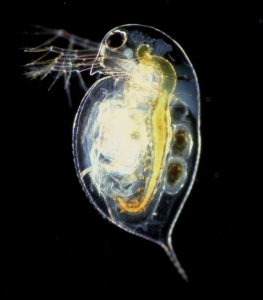7.3 Does sex lead to fewer mutations?
Mutations
Mutations are a fundamental feature of life. Because the genetic machinery that replicates DNA is imperfect, all organisms possess DNA that is at least slightly different from their parents’ DNA, and sometimes those mutations are deleterious (harmful). Mutations also occur because of mutagens (mutation-causing agents) like UV radiation and chemical mutagens.
Some biologists have suggested that one of the benefits of sex is its ability to 1) repair DNA damage during meiosis and 2) rid organism’s lineages of harmful combinations of mutations.
Sex and DNA repair within organisms’ bodies
Mutations arise from random errors in DNA replication: by the insertion or deletion of mobile genetic elements, or through the effects of various mutagens (e.g., chemical compounds or radiation) that damage DNA. However, most of the damage that occurs to a cell’s DNA is repaired. Cells have numerous tools that can fix the damage that can occur.
Mutagens such as radiation can cause single- and double-strand breaks in the double helix of DNA. If there is damage to only one DNA strand, the other strand can be used as a template for repair. More problematic is when both strands of DNA break; when this happens there is not a simple way to re-synthesize the lost DNA. In organisms that are diploid (their cells have two copies of each chromosome), there is a complementary chromosome, or homolog, available—but in order to be useful, it must be physically close to the damaged DNA.
Chromosome pairs are found close together in the first stage of meiosis, in which crossing-over between the chromosomes occurs. In fact, many of the cellular tools used to repair double strand breaks in DNA are the same ones that facilitate crossing over (homologous recombination) during meiosis. So, if meiosis repairs damaged DNA, and meiosis is essential to sexual reproduction, perhaps sex exists because of the repair benefits of meiosis itself.
In contrast, many asexually reproducing organisms reproduce via mitosis, not meiosis. This means that they do not experience the possibility of DNA repair during meiosis.
(For a refresher about meiosis and mitosis, look back to Chapter 6.)
Muller’s Ratchet: Purging harmful mutations through sexual reproduction
A ratchet is a tool that is useful for tightening bolts because it rotates in only one direction.
Similarly, once a mutation occurs within a population, it is extremely unlikely to un-occur. Because mutations occur at low frequencies and at random locations in an organism’s genome, there is very low probability that an organism’s offspring will gain a “back mutation” — a mutation in the exact same spot that “undoes” the first mutation. Thus, over time, a lineage will likely accumulate increasing numbers of mutations, and some of them may be harmful. This idea is often called “Muller’s ratchet,” after scientist Hermann Joseph Muller who devised the hypothesis and the simple machine, the ratchet (Figure 7.5).

According to Muller’s ratchet hypothesis for the existence of sex, sexual reproduction leads to the elimination of harmful mutations over many generations of evolution. Sexual organisms create gametes with shuffled DNA, and combining those gametes with another individual’s gametes (which would presumably have a different collection of mutations) results in some of the offspring carrying fewer harmful mutations than others. The offspring with fewer harmful mutations are more likely to survive and reproduce. In other words, because of sexual reproduction, a lineage has an opportunity to shuffle its genetic material, and produce some offspring with fewer harmful mutations. Thus, the shuffling of material that occurs during sexual reproduction essentially rotates the ratchet backwards, “purging” the lineage of harmful mutations.
Evidence supporting Muller’s ratchet

A testable prediction associated with Muller’s ratchet is: Mutations accumulate more rapidly in asexually reproducing organisms than in sexual organisms. To investigate this hypothesis, scientists study organisms that occur in both sexual and asexual forms. One such animal is the microscopic water flea (Daphnia; Figure 7.6), which can reproduce both asexually and sexually. Scientists are able to maintain populations of asexual and sexual water fleas, separately, and therefore manipulate the mode of reproduction.
A comparison of strains of water fleas that reproduce asexually with those reproduce sexually revealed that the asexual populations have more mutations over time. Specifically, the asexual water fleas have a higher proportion of substitution mutations that result in amino acid changes. This comparison supports the hypothesis that sexual reproduction reduces the accumulation of potentially harmful mutations. Similar observations have been made in comparisons of sexual and asexual lineages of freshwater snails.
Check Yourself
- Image by ZabMilenko, CC BY 3.0. https://commons.wikimedia.org/w/index.php?curid=49717967\ ↵
- Image by: Paul Hebert. CC BY 2.5, Functional Genomics Thickens the Biological Plot. Gewin V, PLoS Biology Vol. 3/6/2005, e219. doi:10.1371/journal.pbio.0030219. https://commons.wikimedia.org/w/index.php?curid=1428600 ↵

